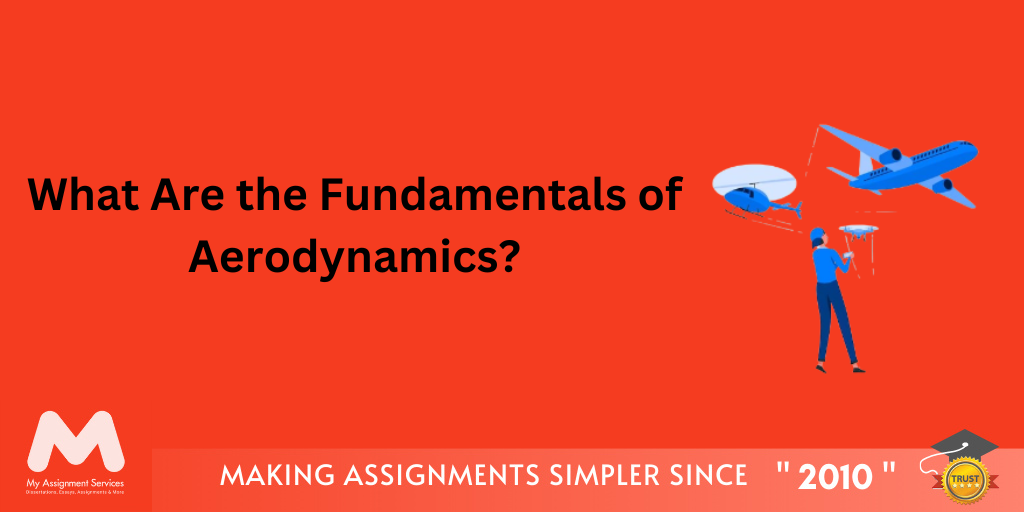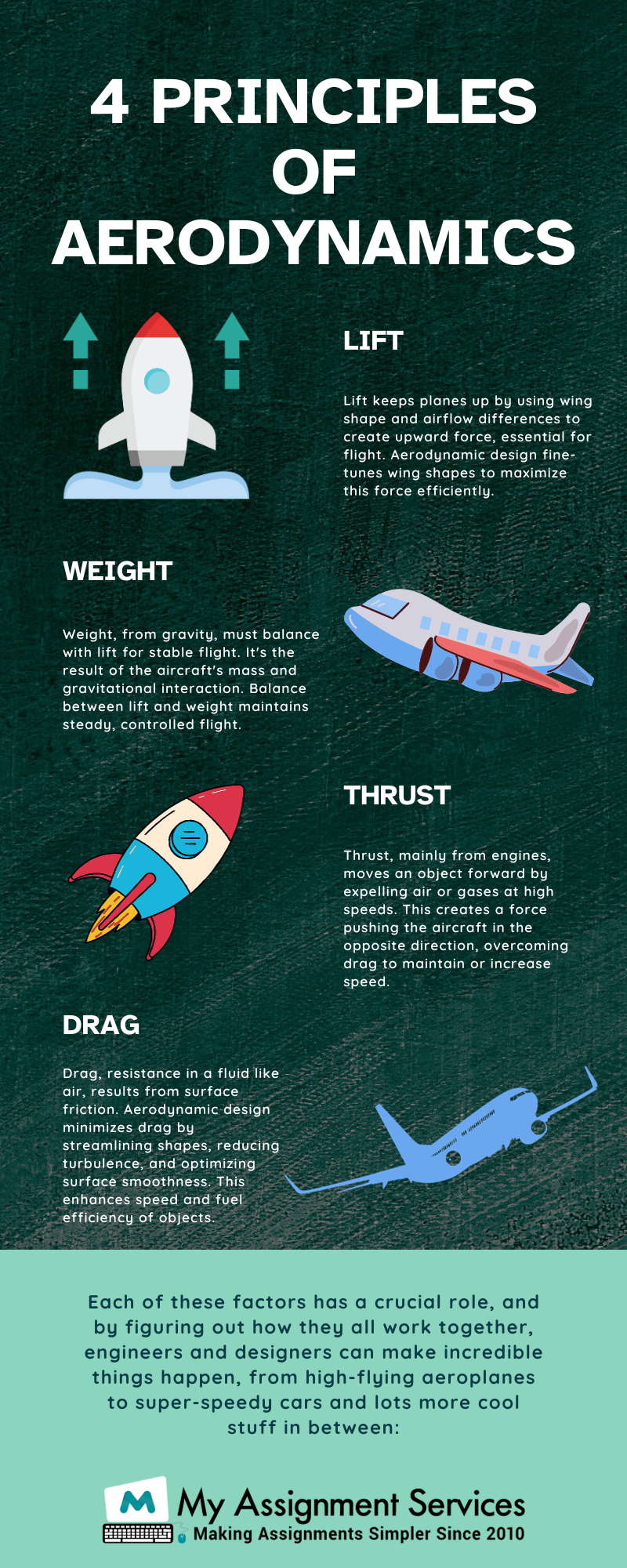
Did you know that the shape of an aeroplane's wing holds its secret to defying gravity? Aerodynamics, the science governing the behaviour of objects in motion through air, is the pivotal force behind this marvel. From the lift that keeps aircraft aloft to the drag that opposes their forward motion, aerodynamics weaves together the principles dictating flight. It's a field as old as humanity's fascination with flight, tracing its origins from Leonardo da Vinci's sketches to the modern-day innovations propelling space exploration. Also, exploring the fundamentals of aerodynamics provides the base of complex fluid dynamics, propulsion mechanisms, and design detailings that shape our skies and challenge the boundaries of human ingenuity. So, join us on an exhilarating journey through the elemental principles that define how objects take to the air and soar.
Aerodynamics is the scientific study of how gases, specifically air, interact with objects in motion. At its core, it focuses on understanding the forces acting on solid bodies as they move through the air and, conversely, the impact of air movement on those bodies. It delves into the complex relationship between shape, speed and the resulting forces, fundamentally shaping the behaviour of everything from aircraft and cars to birds and even sports balls.
Central to aerodynamics are four primary forces: lift, weight, thrust, and drag. Lift opposes the force of gravity, keeping aircraft airborne by manipulating airflow over specially designed wings. Thrust, generated by engines or other propulsion systems, overcomes drag, the resistance encountered as an object moves through the air. In conjunction with weight, which is the gravitational force acting on the object, these forces are intricately balanced to facilitate flight or efficient movement.
All in all, Aerodynamics isn't solely confined to flight; it influences various engineering aspects, shaping the efficiency and performance of vehicles, buildings, and even sports equipment, making it a cornerstone in multiple fields of innovation and design. That's why students take assistance from engineering assignment help to them understand the core concept easily.

Now that we know the term and what factors it works upon, let's get into the details and know more about those factors, more like the basic fundamentals of aerodynamics. Each of these factors has a crucial role, and by figuring out how they all work together, engineers and designers can make incredible things happen, from high-flying aeroplanes to super-speedy cars and lots more cool stuff in between:
Lift is the force that enables aircraft to overcome gravity and stay aloft. The wings generate this force through a combination of their shape, known as an airfoil, and the motion of air around them. As air flows over the wing's curved upper surface faster than the lower surface, it creates a pressure difference. This pressure differential results in an upward force, lifting the aircraft. The lift generation is essential for flight, and aerodynamic design heavily focuses on optimising wing shapes to maximise this force efficiently.
Weight is the force exerted on an object due to gravity. In aerodynamics, a crucial force must be balanced by lift for an aircraft to maintain steady flight. Understanding weight involves considering the plane's mass and how it interacts with gravitational pull. Balancing the lift and weight forces ensures the aircraft remains airborne without ascending or descending uncontrollably.
Thrust is the force that propels an object forward. In aviation, it's primarily generated by engines. These engines expel air or gases at high speeds, creating a reactionary force that pushes the aircraft in the opposite direction. In simpler terms, thrust overcomes drag (the resistance of the air against the aircraft's forward motion) to maintain or accelerate the aircraft's speed.
Drag is the resistance an object encounters as it moves through a fluid, in this case, air. The friction between the air and the surfaces of the aircraft causes it. This fundamental of aerodynamics design aims to minimise drag by streamlining the shape of the object, reducing turbulent airflow, and optimising surface smoothness. Minimising drag is critical for enhancing an object's speed and fuel efficiency.
Aerodynamics serves as the backbone of aviation, playing a critical role in aircraft design, performance, and safety. From enabling flight by manipulating lift and drag to optimising fuel efficiency and stability, its significance in aviation cannot be overstated. However, the complexities involved often lead students to seek assistance from engineering assignment help, especially in engineering assignments focused on aerodynamics, as grasping these principles requires a blend of theoretical understanding and practical application:
The design of aircraft demands a meticulous understanding of aerodynamics. Engineers meticulously shape wings, fuselage, and other components to ensure optimal airflow, minimal drag, and maximum lift. These designs culminate mathematical calculations, simulations, and wind tunnel tests to craft machines that can safely drive through the skies. However, mastering these designs requires a deep comprehension of aerodynamic principles which can be challenging for students.
Aerodynamics directly influences an aircraft's performance. It dictates fuel efficiency, speed, manoeuvrability, and even the ability to withstand turbulent conditions. Students grappling with aerodynamics in aviation engineering often encounter assignments focusing on optimising these factors, which can overwhelm students without sufficient guidance.
Understanding aerodynamics is pivotal for ensuring flight safety and fostering innovation. Engineers continuously innovate to enhance aircraft performance while maintaining safety standards. Assignments in this field may involve studying accidents, analysing aerodynamic factors contributing to mishaps, and proposing innovative solutions. This necessitates a deep understanding of learning fundamentals of aerodynamics' practical applications, challenging students to think critically and creatively.
Understanding the fundamentals of aerodynamics explores the science behind flight, revealing how forces like lift, weight, thrust, and drag shape the skies above us. Mastering these concepts is challenging, especially when navigating the complexities of engineering assignments. If you grapple with these difficult aerodynamic principles and search for services like "pay someone to do my assignment", seeking assistance can be the key to unlocking your potential.
My Assignment Services are here to support you through the complexity of aerodynamics and other demanding subjects. Don't hesitate to seek guidance and gain a deeper understanding of these crucial concepts. Accept the opportunity to soar in your studies by exploring the fascinating world of aerodynamics with expert support. Take that leap, and let's conquer these concepts together!

1,212,718Orders
4.9/5Rating
5,063Experts
Bonanza Offer
Get 40% Off *
on your assignment today
Trending now
The Student Corner
Subscribe to get updates, offers and assignment tips right in your inbox.
Popular Posts
Popular Posts
Doing your Assignment with our samples is simple, take Expert assistance to ensure HD Grades. Here you Go....
Loved reading this Blog? Share your valuable thoughts in the comment section.
Add comment